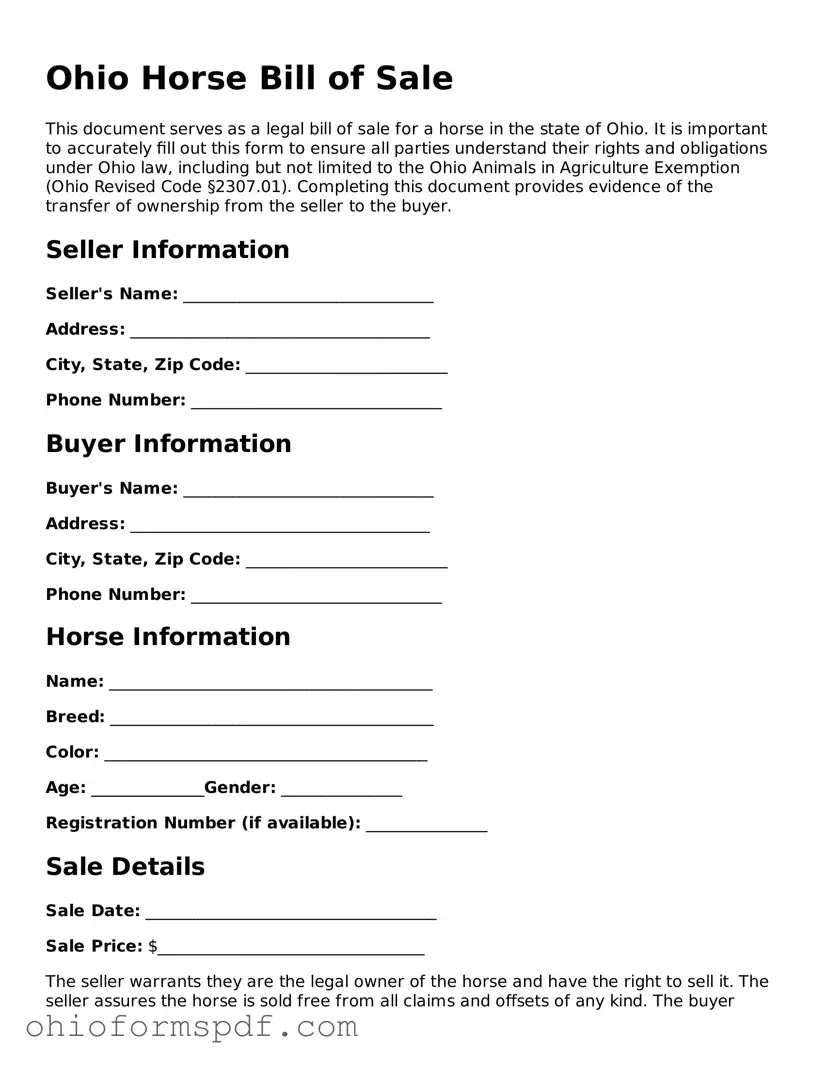Ohio Horse Bill of Sale
This document serves as a legal bill of sale for a horse in the state of Ohio. It is important to accurately fill out this form to ensure all parties understand their rights and obligations under Ohio law, including but not limited to the Ohio Animals in Agriculture Exemption (Ohio Revised Code §2307.01). Completing this document provides evidence of the transfer of ownership from the seller to the buyer.
Seller Information
Seller's Name: _______________________________
Address: _____________________________________
City, State, Zip Code: _________________________
Phone Number: _______________________________
Buyer Information
Buyer's Name: _______________________________
Address: _____________________________________
City, State, Zip Code: _________________________
Phone Number: _______________________________
Horse Information
Name: ________________________________________
Breed: ________________________________________
Color: ________________________________________
Age: ______________Gender: _______________
Registration Number (if available): _______________
Sale Details
Sale Date: ____________________________________
Sale Price: $_________________________________
The seller warrants they are the legal owner of the horse and have the right to sell it. The seller assures the horse is sold free from all claims and offsets of any kind. The buyer accepts the horse as-is, subject to any inspection they or their representatives have made prior to the sale. This bill of sale represents the entire agreement between the buyer and seller and supersedes all prior negotiations, agreements, or understandings.
Signatures
This document is not valid without the signatures of both the buyer and the seller, as well as the date of signing.
Seller's Signature: ___________________________Date: ________________
Buyer's Signature: _____________________________Date: ________________
Witness (if applicable)
Witness's Name: ______________________________
Signature: ___________________________________Date: ________________
Note: It is recommended to have this bill of sale notarized, especially for transactions that are complex or involve significant amounts. This can provide an additional layer of legal protection for both parties.
